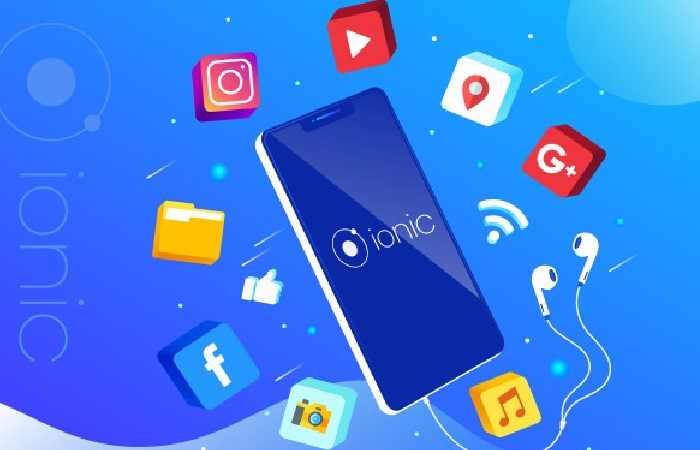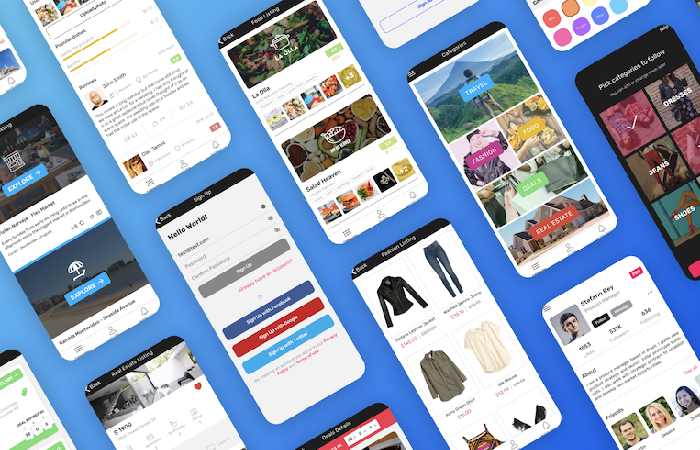Do People Still use Building Ionic Framework Apps?
Table of Contents
Introduction
Do you know what the best thing about IT is? You always have a playing field with the latest and most diverse technologies. Interesting right? Last month we presented a comparison between Next.js and React and selected the best front-end frameworks blog.
In fact, since the introduction of TezJS, it has not been easy to choose the right stack for front-end developers. Because TezJS has proven to be the most efficient, advanced, and revolutionary JavaScript framework for modern jam stack programming. And now, let’s shed some light on the best frameworks for mobile applications—definitely a cross-platform framework: React Native vs. Ionic for developing non-native apps.
Do People Still Use Building Ionic Framework Apps?
Building Ionic Framework Apps, it is simple to create iOS, Android, desktop, and progressive web apps using the Ionic stack. So when must you or your team consider adopting Ionic when there are many choices for developing cross-platform mobile and web apps?
If you’re a web creator and want to stay in the web development industry, Building Ionic Framework Apps is one of the most excellent options. The Building Ionic Framework Apps stack remains based on standard web development technologies, allowing you to launch and develop a typical native app while developing most of it directly in a browser using common browser development tools and technologies.
Building apps utilising well-known technology makes it simpler to identify partners, collaborators, and resources online while you construct your app.
Building Ionic Framework Apps – Millions of developers worldwide have created apps using the Ionic stack, resulting in a sizable developer community. Developers may obtain assistance on the Stack Overflow and Ionic forums, which are maintained and shared by enthusiastic community members.
However, Building Ionic Framework Apps is distinctive because the community extends beyond the Ionic bubble. Ionic’s targeted community extends beyond Ionic and combines with the larger web development community, including the React, Angular, and Vue communities, resulting from Ionic’s foundation in standard web technologies. It is crucial to remember when creating app development teams since, although web developers may shape the Building Ionic Framework Apps squad, other technologies necessitate the appointment of specialists in obscure languages and software.
How do I make an ionic framework mobile app?
We frequently hear from teams that built their app for months using a different technology, missed deadlines, and then moved to Ionic and had the new app up and running and outperforming the previous one in just a few short weeks.
Because of how prolific the web is, Ionic is also very productive. Additionally, since a single programme may operate on several platforms, development times can be up to 3–4 times quicker than with traditional native development! The Ionic stack remains built on web technologies; groups may develop high-performing Progressive Web Apps on the web (PWA).
Teams may reach customers through Google search and the web and traditional app stores to optimise spread and have the highest chance of a successful app project. In addition, the Ionic stack offers you the most acceptable distribution flexibility of any cross-platform solution on the market. As we’ve covered in-depth.
The most user-friendly platform for creating cross-platform apps is Ionic. However, to construct your app with Ionic, you must first master a few new HTML elements and several new JavaScript APIs for native functionality (React, Angular, Vue, etc.).
The best part is that you may maintain your technical career emphasis while improving your web development abilities.
Frameworks and the Ionic framework are helpful in this situation! When it remained first introduced in 2012, web-based technologies like JavaScript. Were only beginning to stay widely utilised for developing and deploying native apps for iOS, Android, and other well-known mobile operating systems
What Language is the Ionic Framework Written Cutting-Edge?
The web-based programming languages HTML, CSS, and JavaScript remain used to create Ionic apps. So, if you know how to make a straightforward web application, you already know how to make it using Ionic. With Ionic, you can use a single, shared codebase to launch a native iOS or Android app. Native desktop app, or online app.
Ionic is an open-source framework for creating Progressive Web Apps (PWAs) and cross-platform apps built with HTML5. The framework also comes with a tonne of front-end building blocks. Which facilitates the creation of mobile apps that are incredibly user-friendly. Ionic’s core technology also includes CSS and JavaScript in addition to HTML5. Additionally, your program obligation is wrapped in Cordova or PhoneGap to work across many platforms. It makes Ionic the ideal choice for online applications.
One of the most widely used cross-platform mobile development frameworks nowadays is Ionic. More than 5 million Ionic apps are supported and improved daily by developers from more than 200 countries to give you knowledge of how general it is.
The Ionic framework enables you to create cross-platform applications with only one codebase for all current mobile operating systems. Additionally, Ionic templates are available to make creating your ideal app faster. The official store for Ionic is where you can get more designs, scripts, and plug-ins for your next app project.
Conclusion:
Building Ionic Framework Apps – Could desktop computers also run Ionic web apps? They can use Electron! You may use the desktop to put all the time and effort into studying mobile web technologies like HTML, CSS, JavaScript, Angular, and Ionic. Ionic is the ideal solution for your next online application, PWA. Mobile app since it has the freedom to use specific CSS and responsive elements. Having one code base that can be developed into a native mobile app and can remain delivered to the web is already impressive.
Related posts
Featured Posts
Vanessa Bryant: Who is She? Vanessa Bryant Net Worth 2021
Vanessa Bryant Net Worth – The mother nationality of Vanessa is the American Vanessa Cornejo Urbieta. However, she was born…
What exactly is Google App Console? – Smart Tech Crunch – 2022
You may expand your Google Play company by using the Google Play App Console to publish your applications and games….


